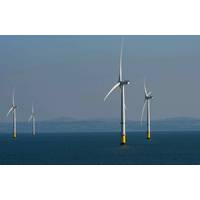Data shows that the battery capacity of Germany's power grid will increase by almost a third between 2024 and 2028.
Official data released on Thursday showed that the capacity of Germany's grid batteries used to stabilize electricity networks had increased by almost a third this year. This is a result of efforts to accommodate more renewable energy.
Berlin's government is aiming for wind and solar energy to make up 80% of all electricity by 2030. In the first half 2024, renewables accounted for 60% of power production.
Storage is needed to balance the supply and demand of the system and to reduce the volatility in wholesale power prices. The government does not have a set of targets for the amount of storage that needs to be built.
Batteries companies can profit by selling power at high prices and storing power at low prices or even negative prices.
In response to a question from the German economy ministry, a spokesperson said: "We observe an aggressive market-driven increase in battery storage."
The spokesperson mentioned measures taken to lower fees and levies on new infrastructure, and speed up approvals.
A government-commissioned market register, which the spokesperson referred to, showed 1.8 gigawatt hours (GWh) of capacity were completed on Sept. 18, compared with 1.4 GWh on Jan. 1.
The British energy firm VPI, supported by energy trader Vitol said last week that it would invest up to 450 millions euros ($502,07 million) in battery projects over the next 3 to 5 years, mostly in Germany's windy North-East.
The Aachen Technical University's market register also lists a pipeline of 3.7 GWh known projects, from now until September 2027.
Utility RWE is one of the local players who are building and operating assets.
A spokesperson for RWE said that by the end of 2024 the Hamm and Neurath sites of the North Rhine-Westphalia power plants will have a capacity of 235 Megawatt Hours, as part of many other projects in the country and abroad.
(source: Reuters)


